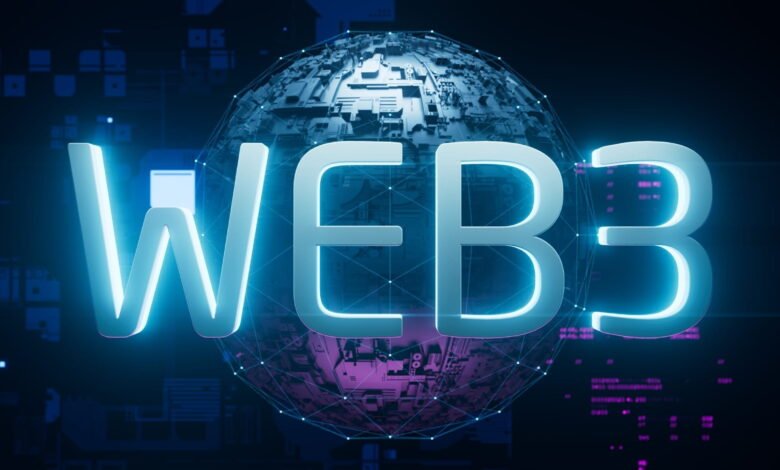Web3 Truth What Founders Must Know Before They Launch
Web3 Truth that most founders ignore. Learn why decentralization promises often fail and what it takes to succeed in blockchain.

Web3 has captivated entrepreneurs worldwide with visions of decentralised utopias, token-based economies, and revolutionary business models that challenge traditional Silicon Valley paradigms. Venture capitalists have poured billions into blockchain startups, while founders rush to launch their own decentralised applications, convinced they’re building the future of the internet. However, beneath the glossy whitepapers and ambitious roadmaps lies a series of uncomfortable truths that many Web3 founders desperately need to confront before they burn through their funding and waste years of their lives.
The reality is that decentralised technology isn’t the magical solution to every problem that marketing materials suggest. Web3 Truth: Many founders enter the Web3 space armed with enthusiasm but lacking a realistic understanding of the technical limitations, regulatory challenges, and market dynamics that will determine whether their projects succeed or become yet another cautionary tale in the cryptocurrency graveyard. This article pulls back the curtain on the harsh realities of building in Web3, offering founders an honest assessment that might save them from costly mistakes and help them navigate this complex landscape with eyes wide open.
The Decentralization Myth: Why Most Web3 Projects Aren’t Actually Decentralized
One of the most uncomfortable truths about Web3 projects is that the vast majority aren’t genuinely decentralised despite claiming otherwise. Founders love to use “decentralisation” as a buzzword in their pitch decks, but when you examine the actual architecture of most blockchain applications, you’ll discover centralised points of failure everywhere. The front-end typically runs on AWS or centralised hosting services, the team holds the majority of governance tokens, and critical infrastructure components depend on centralised APIs and oracles.
This pseudo-decentralisation creates a dangerous disconnect between marketing promises and technical reality. When founders tell their community that they’re building a decentralised autonomous organisation or a truly permissionless platform, they’re often describing an aspirational future state rather than the current reality. The problem intensifies when regulatory scrutiny arrives, because claiming decentralisation while maintaining centralised control creates legal vulnerabilities that can destroy a project overnight.
True decentralisation requires sacrificing control, which terrifies most founders who want to maintain their ability to pivot, update, and guide their projects. The uncomfortable truth is that genuine decentralisation makes products harder to use, slower to evolve, and more vulnerable to governance attacks. Most successful Web3 companies have found pragmatic middle grounds, but few are willing to admit publicly that they’ve compromised their decentralisation ideals for practical necessity.
Your Token Economics Probably Don’t Work: The Math Behind Failed Projects
Perhaps the most devastating truth facing Web3 founders involves tokenomics—the economic models underlying their cryptocurrency projects. The harsh reality is that most token designs are fundamentally broken, creating unsustainable economies that inevitably collapse. Founders often approach token design with wishful thinking rather than rigorous economic analysis, assuming that if they build compelling features, the token price will naturally appreciate and create a thriving ecosystem.
The mathematics of sustainable token economies demands far more sophistication than most founding teams possess. You need to account for velocity, value capture mechanisms, inflationary pressures, and network effects in ways that remain balanced across different usage scenarios. Most projects fail this test spectacularly, creating tokens that serve no clear purpose beyond speculation, or worse, designing Ponzi-like structures where early participants profit only at the expense of later entrants.
Consider how many projects launched with aggressive staking rewards or liquidity mining programs, only to watch their token economies’ death spiral when incentives dried up. The uncomfortable truth is that you cannot subsidise user acquisition indefinitely with token emissions. Eventually, your project needs to generate real value that justifies token demand, and most Web3 applications simply don’t create enough utility to support their token valuations. Founders need to confront whether their token is genuinely necessary or if they’re forcing blockchain into their business model because investors expect it.
The Regulatory Reckoning Is Coming Faster Than You Think
While many blockchain entrepreneurs have operated in regulatory grey zones, assuming they could build first and deal with compliance later, this comfortable ignorance is becoming increasingly dangerous. Regulatory frameworks around cryptocurrency and decentralised finance are tightening globally, and the assumption that regulators don’t understand technology or move too slowly to catch innovation has proven catastrophically wrong for numerous projects.
The uncomfortable truth about Web3 regulation is that many existing projects operate in violation of securities laws, money transmission requirements, or financial regulations—they just haven’t been caught yet. When founders claim their governance token isn’t a security despite clearly meeting the Howey Test, or when they facilitate cross-border money movement without proper licensing, they’re building on legal quicksand that could swallow their entire operation when authorities eventually arrive.
Smart founders recognise that regulatory compliance isn’t just about avoiding prosecution; it’s about building sustainable businesses that can operate openly rather than constantly looking over their shoulders. The projects that will survive the next decade are those designed with regulatory reality in mind from day one, even if that means accepting limitations that seem to constrain the revolutionary potential of decentralised technology. Ignoring regulations doesn’t make them go away; it merely delays an inevitable confrontation that usually ends badly for founders who’ve convinced themselves they’re operating in a jurisdiction-free zone.
User Experience Remains Web3’s Insurmountable Problem
For all the technical innovation in blockchain technology, Web3 has failed spectacularly at creating user experiences that normal people can navigate. The uncomfortable truth that founders must acknowledge is that expecting mainstream users to manage private keys, understand gas fees, navigate multiple wallets, and accept irreversible transactions creates friction that most consumers simply won’t tolerate. Despite years of development and billions in funding, interacting with decentralised applications remains dramatically more complex than using traditional web services.
Founders often dismiss UX concerns by claiming that their target audience consists of early adopters who appreciate the technical sophistication, but this attitude guarantees perpetual niche status. The reality is that crypto wallet management alone represents an insurmountable barrier for hundreds of millions of potential users who can barely remember their email passwords, let alone safeguard seed phrases that control their financial assets. Lost keys, phishing attacks, and confusing transaction flows aren’t edge cases—they’re fundamental characteristics of current Web3 architecture.
Some projects attempt to abstract away blockchain complexity through custodial solutions or smart contract wallets, but these approaches sacrifice the very decentralisation and self-sovereignty that supposedly justify using blockchain in the first place. The uncomfortable truth is that you can’t have both genuine decentralisation and a mainstream-friendly user experience with current technology. Founders need to honestly assess whether their target market actually values the properties blockchain provides enough to accept dramatically worse usability, or if they’re building something that will forever remain confined to cryptocurrency enthusiasts.
The Talent Problem: Why Your Team Probably: Web3 Truth
An uncomfortable reality facing Web3 startups involves talent scarcity and capability gaps that founders rarely acknowledge publicly. The intersection of blockchain development, cryptography, distributed systems, and token economics requires exceptionally rare skill combinations, yet most Web3 projects are staffed with developers who’ve completed a Solidity bootcamp and marketers who previously shilled for other cryptocurrency projects. The gap between what successful Web3 execution requires and what most teams can actually deliver is enormous.
Compounding this problem, the cryptocurrency boom attracted opportunists more interested in quick profits than building sustainable technology. Many developers and advisors in the blockchain ecosystem jump between projects every few months, chasing token allocations rather than committing to long-term vision execution. This transient talent pool creates instability that would be unacceptable in traditional startups but has become normalised in Web3, where founders convince themselves that mercenary team members are simply “embracing decentralisation.”
The uncomfortable truth is that building genuinely innovative blockchain applications requires world-class engineering talent that could command premium compensation at established technology companies. Convincing these engineers to join your uncertain Web3 venture demands either exceptional vision, substantial funding, or token upside that may never materialise. Most founders settle for mediocre teams while convincing themselves that passion compensates for capability gaps, then wonder why their technical execution consistently falls short of their ambitious roadmaps.
Market Fit Matters More Than Technology: Most Projects Solve Problems Nobody Has
Perhaps the most painful truth for Web3 founders to confront is that their revolutionary decentralised solution addresses a problem that doesn’t actually exist or that users don’t care about solving. The cryptocurrency space is littered with technically impressive projects that created decentralised versions of existing services without offering compelling reasons for users to switch from perfectly functional centralised alternatives. Founders become so enamoured with blockchain’s theoretical advantages that they forget to validate whether their target market actually experiences the problems their solution addresses.
The uncomfortable reality about product-market fit in Web3 is that decentralisation itself isn’t a feature most consumers value. Outside the cryptocurrency community, almost nobody lies awake worrying about censorship resistance, platform risk, or data sovereignty. When founders pitch their decentralised social network, they emphasise philosophical benefits that resonate with libertarian technologists but mean nothing to the billions of people happily using Facebook, Instagram, and Twitter despite understanding these platforms’ limitations.
This disconnect between founder vision and market reality explains why so many well-funded Web3 projects struggle to gain meaningful traction beyond speculative token trading. Building a decentralised version of Uber, Airbnb, or Twitter only makes sense if centralisation creates problems that users actively want solved badly enough to accept the trade-offs blockchain solutions require. Most of the time, it doesn’t. Founders need to honestly assess whether their project serves a genuine market need or merely represents an ideological exercise in decentralisation for its own sake.
Conclusion
The uncomfortable truths about Web3 that founders need to hear aren’t meant to discourage innovation or suggest that blockchain technology lacks potential. Rather, they’re intended to inject realism into an ecosystem that too often prioritises hype over honest assessment. The projects that will ultimately succeed in building meaningful decentralised applications are those whose founders confront these challenges directly rather than hiding behind marketing rhetoric and community cheerleading.
Success in Web3 demands acknowledging that true decentralisation requires painful trade-offs, that token economics needs rigorous design, that regulatory compliance can’t be permanently avoided, that user experience remains fundamentally challenging, that execution requires exceptional talent, and that market fit matters more than technological sophistication. Founders who accept these realities can make informed decisions about whether their specific project justifies the challenges blockchain introduces, and more importantly, whether they’re prepared to navigate the difficult path ahead.
The future of decentralised technology will be built by founders willing to face uncomfortable truths rather than those who simply repeat optimistic narratives. If you’re building in Web3, ask yourself whether you’re honestly assessing your project’s realities or merely convincing yourself that your vision will somehow transcend the fundamental challenges that have defeated countless projects before you. The answer to that question will likely determine whether your startup becomes a meaningful contributor to blockchain innovation or another cautionary tale about enthusiasm outpacing reality.
FAQs
Q: Is Web3 completely doomed, or are there legitimate use cases for blockchain technology?
Web3 isn’t doomed, but its successful applications will be far narrower than current hype suggests. Legitimate use cases exist in areas where decentralisation provides concrete benefits that justify its costs—such as cross-border payments, censorship-resistant publishing.
Q: How can founders design token economics that actually work long-term?
Sustainable token economics requires treating your token as an integral part of your business model rather than a fundraising mechanism. Focus on creating genuine utility that drives organic demand, and implement value capture mechanisms that connect token price to protocol success.
Q: What should Web3 founders prioritise to prepare for increasing regulatory scrutiny?
Founders should engage qualified legal counsel familiar with securities law and financial regulations early in their project development. Consider whether your token distribution constitutes a securities offering, and ensure compliance with know-your-customer and anti-money-laundering requirements.
Q: Can Web3 applications ever achieve user experiences comparable to traditional web services?
Achieving mainstream-friendly user experiences in Web3 requires either technological breakthroughs that eliminate current friction points or accepting centralised compromises that handle complexity behind the scenes. Account abstraction, social recovery mechanisms.
Q: How can founders realistically assess whether their project has genuine product-market fit?
Test product-market fit by examining user behaviour when token incentives are removed or minimised. If people only use your application to earn rewards or speculate on your token, you haven’t achieved real fit. Look for organic growth driven by utility rather than financial incentives.


